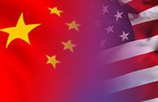China a forgotten WWII ally: historian
Updated: 2015-08-05 20:07
(Xinhua)
|
||||||||
BEIJING - China deserves more respect abroad for its role resisting fascism during World War II, a Chinese historian has said, as the country marks the 70th anniversary of the end of the war.
"China's important status and efforts during the war have been neglected by the West for more than 70 years due to the cold war. It's not fair that the country hasn't received due respect and has become a forgotten ally," Hu Dekun wrote in an article published on Wednesday in Guangming Daily.
Hu, president of the Chinese Research Association of Second World War History, stressed that China was the main battlefield in Asia and one of the most important battlefields in the whole of the war.
Japan started to invade northeast China in September 1931, foreshadowing WWII and making China the first country to resist Fascism. With Japan's full-scale invasion kicking off on July 7, 1937, the Kuomintang and the Communist Party of China (CPC) joined forces, making China the first battlefield of resistance against the Axis.
Citing Japanese battle logs describing the bloody Battle of Songhu in 1937, Hu said Chinese soldiers and civilians' resistance was "very tough." They endured a siege during the battle in which Japan suffered more than 40,000 casualties.
China's resoluteness foiled the enemy's fantasy of winning the war within a month and dragged the main force of the Japanese army into drawn-out, costly warfare, holding Japan back from invading other regions and relieving pressures on the United States, Britain and the Soviet Union.
According to the article, as Japan had to gradually mobilize more forces to China, 32 of 34 divisions of the Japanese army, or 94 percent of its entire forces, as well as some navy forces, ended up in the China battlefield by 1938, when large-scale battles took place in central China.
As the resistance went on, the CPC's regular army and militia grew to surpass 3.1 million people and they became the main force to finally turn the tables and launch counterattacks in 1945.
Meanwhile, China's fierce resistance also greatly distracted Japan from the Pacific battlefield, Hu noted.
In 1942, the Japanese navy mapped a plan to invade Australia to prevent the United States using the country as a base to launch counterattacks, but the Japanese army, unable to transfer a huge portion of its forces from China, rejected the plan.
- Kunming holds exhibition featuring victory in World War II
- Exhibition to mark victory in World War II
- Secret World War II documents show partnership in action
- Bulk World War II artillery shells found in NE China farmer's house
- Concert commemorating World War II victory held in Sichuan
- Poland commemorates 70th anniversary of end of World War II
- World War II memorial cemetery in Cairo

 Robotic exhibition set to kick off in Shenyang
Robotic exhibition set to kick off in Shenyang
 Eat from a paper hotpot
Eat from a paper hotpot
 8 interesting facts about the upcoming V-day Parade
8 interesting facts about the upcoming V-day Parade
 Top 10 economies by growth rate among G20
Top 10 economies by growth rate among G20
 Happy faces in Tibet
Happy faces in Tibet
 Historic images of military parades
Historic images of military parades
 Top 10 wealthiest Chinese in the world in 2015
Top 10 wealthiest Chinese in the world in 2015
 Models heat up Xinjiang desert with Atlas silk
Models heat up Xinjiang desert with Atlas silk
Most Viewed
Editor's Picks

|

|

|

|

|

|
Today's Top News
Senior US official to visit China on bilateral issues
China manufacturing PMI falls to 49.7 in August
Second homes in China need lower down payment
Xi meets with former KMT chairman
Chinese athletes win 9 medals at Beijing world championships
Houston physicist invited to view V-Day parade in Beijing
It's a boy! DC panda thriving
Journalist, securities regulatory official held for stock market violation
US Weekly

|

|








